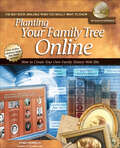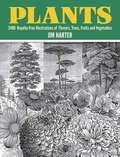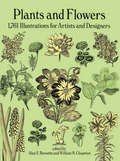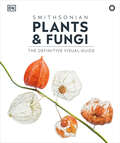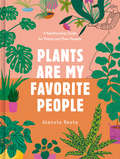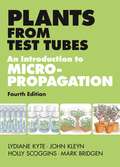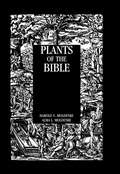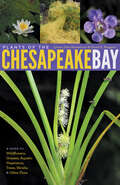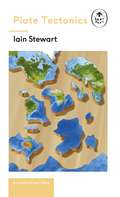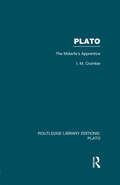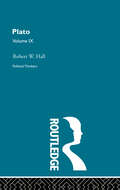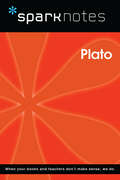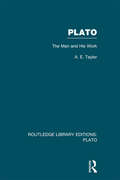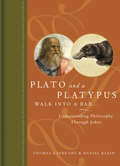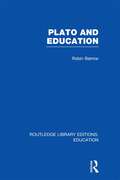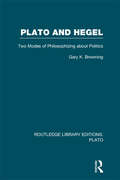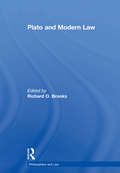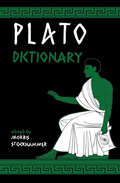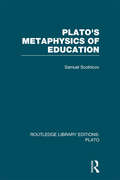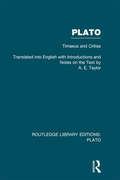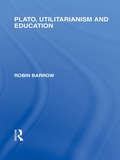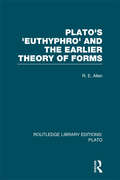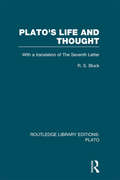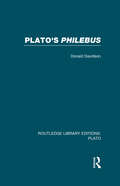- Table View
- List View
Planting Your Family Tree Online: How to Create Your Own Family History Web Site
by Cyndi HowellsA beginner’s guide to building a website that traces your family’s lineage as a resource for present and future generations, or for finding new relatives.Planting Your Family Tree Online is designed to take you step-by-step through the process of creating a genealogy Web site.When people begin their genealogical adventure, they usually interview elderly members of the family and contact other family members. The next step is usually one of organization of the information collected. The third step is usually to share this information with other family members, traditionally by publishing research in a book. However, a family Web site has numerous advantages:It is interactive so others can contribute their stories and pictures.It will help you find long-lost relatives.It is an ideal way to preserve research for the entire family.It will break down the walls that have stumped you in your research.It recognizes that family research is an ongoing processThis book is written by Cyndi Howells, owner and webmaster of Cyndi’s List, a Web site of more than 130,000 online genealogical resources. Cyndi points out, “This book is loaded with URLs to Web sites that will give you everything you need to create a beautiful family tree online.” However, Web site URLs change daily and some may no longer work. She has created web pages as part of Cyndi’s List that correspond to the features of the book so that the URLs will be kept up-to-date.
Plants: 2,400 Royalty-Free Illustrations of Flowers, Trees, Fruits and Vegetables
by Jim HarterHundreds of plant species -- from lilies, lichens, and palms to mushrooms, mosses, and maples -- supplemented by appendices on edible plants, medicinal herbs, and plants used in decoration and in graphic design. Indispensable source of inspiration and royalty-free graphics for designers and artists; a captivating compendium for botanists, gardeners, and collectors of old engravings.
Plants and Flowers: 1761 Illustrations for Artists and Designers (Dover Pictorial Archive Ser.)
by Alan E. Bessette William K. ChapmanThis comprehensive archive offers authentically detailed, copyright-free illustrations of hundreds of plants and flowers from around the world. Ideal for graphic artists, designers, and others in the arts and crafts, it will also serve both serious and casual botanists as a convenient reference and key to identification of a broad range of botanical species. Each illustration has been carefully selected from botanical archives for its scientific accuracy, artistic style, and suitability for reproduction. The plants and flowers are grouped by kind, uses, and habitats into seventeen categories, among them aquatic plants, carnivorous plants, grasses, rushes and sedges, orchids, ornamental plants, plants of commerce, mushrooms, molds and lichens, ferns, mosses, trees, shrubs, weeds, wildflowers, and vines. For easy and accurate reference, both common and botanical Latin names are given for each species whenever possible. All names have been compiled into two convenient indexes. Alan E. Bessette, Professor of Biology at Utica College of Syracuse University, is a well-known naturalist, botanical photographer, and author of numerous books and field guides on botanical subjects. William K. Chapman, a biology teacher and member of the adjunct faculty at Utica College, is a well-known speaker and writer on the gathering of wild foods, and the author of field guides to plants and animals of the Adirondacks.
Plants and Fungi: The Definitive Visual Encyclopedia (DK Definitive Visual Encyclopedias)
by DKComprehensive, accessible, and lavishly illustrated, this is an essential and timely guide to the world's key plant and fungus species.Written by specialists, Plants and Fungi is a botanical exploration of the world's most fascinating plant and fungus species, many of which are also highly valued for their ecological, economic, and cultural importance.Covering all of the main groups—from the fleeting wildflowers that bring life to deserts to the towering giant trees of tropical rainforests, and from the lichens of the Arctic to the cultivated seaweeds of Southeast Asia—the book reveals the spectacular diversity of plants and fungi, the ecosystems they support, their symbiotic relationships, and their use in everything from food to clothing and medicine.Entries explore how plant and fungus species grow and reproduce, and how they have evolved to adapt to every continent on Earth, even in the harshest of conditions, and celebrate their beauty and diversity.
Plants Are My Favorite People: A Relationship Guide for Plants and Their Parents
by Alessia RestaThe plant influencer behind Apartment Botanist proves that anyone can be a plant parent, no matter where you live, how small your space is, or how busy you are.Plant Parent (n.): Any person who has ever cared for or dreamed about caring for at least one plant.Whether you are an aspiring plant parent or already care for a junglelike brood, plant-stagram influencer Alessia Resta (aka Apartment Botanist) has distilled everything you need to know to start and grow your collection in this plant-care bible. It covers all the basics, like understanding light sources, choosing and buying plants, planning for seasonal care, and watering regimens. Alessia also dives into more sophisticated plant care, such as managing humidity, propagating, and mixing your own soil mediums.Plus:• A quiz to help you figure out your parenting style • Profiles of twenty-six popular house plants to swipe right on• Hard-learned lessons on battling pests, avoiding scams, nursing plants back to health, and more• Five soil recipe cards to get you startedWith an emphasis on building a collection that fits your personality and lifestyle, everyone from aspiring newbies to green goddesses will find their perfect plant matches.
Plants from Test Tubes: An Introduction to Micropropogation, 4th Edition
by Holly Scoggins Mark BridgenThirty years ago, in vitro propagation was a new technique for producing plants, and Lydiane Kyte’s Plants from Test Tubes became the standard work on the topic.The new fourth edition has been thoroughly revised and updated to reflect the many advances in science and technology, including the five accepted sequential stages of micropropagation. Ten new plants have been added. This in turn has greatly expanded the already extensive bibliography. Among the new topics that have been introduced or expanded on are embryo culture for breeding, somaclonal variation, anther culture, somatic embryogenesis, cryopreservation, and genetic engineering. More ornamental plant examples are given and many new illustrations provided, including a chronology of discoveries in micropropagation.
Plants Of The Bible
by MoldenkeFirst published in 2005. Routledge is an imprint of Taylor & Francis, an informa company.
Plants of the Chesapeake Bay: A Guide to Wildflowers, Grasses, Aquatic Vegetation, Trees, Shrubs, and Other Flora
by Lytton John Musselman David A. KnepperSecond Place Winner of the Design and Effectiveness Award of the Washington PublishersButtonbush. Hercules' Club. Panic Grass. Tearthumb. Beach Spurge. Sea Rocket. Ladies' Tresses. These name a few of the wild and wonderful plants found in this quick reference guide to plants of the Chesapeake Bay. Written by wetland scientists with decades of experience in the Bay's waterways, this guide includes detailed descriptions and beautiful photographs of the plants most commonly found in the Chesapeake Bay. Grasses, trees, wildflowers, aquatic vegetation—if it grows in the tidal or nearshore regions of the Bay, chances are it is in this book, the features of which include• over 200 illustrations• information on more than 100 species of plants• clear, accessible descriptions of each plant accompanied by close-up photographs for quick, accurate identification• discussion of where to find each plant, how they reproduce, and how humans use them• easy-to-follow organization by habitatThe guide's vivid text and photographs make the wide array of plants along the waters, marshes, and shorelines of the Chesapeake Bay easy to identify and wondrous to behold. Its compact, portable design encourages naturalists, local residents, boaters, researchers, and the curious-minded alike to throw the guide in their pack and explore the botanical bounty of the Chesapeake Bay.
Plate Tectonics: Discover how our planet works from the inside out (The Ladybird Expert Series #4)
by Iain StewartHow do plate tectonics work? Learn from the experts in the ALL-NEW LADYBIRD EXPERT SERIESDiscover in this accessible and authoritative introduction the fundamental theory of how our dynamic planet works.You'll learn about the make up of the Earth in the past and the present, from monsoon-like currents in our planet's radioactive interior to magnetic force lines and what the planet would look like without water.You will learn about:- Our planet as an active living system- The planetary force field- Fault lines that cross continents- How plates tectonics protects life on Earth- And much more . . .Written by the celebrated geologist, academic and popular science presenter Iain Stewart, Plate Tectonics explores the Earth as a planetary machine and investigates the people and ideas that changed the way we look at the world.Learn about other topics in the Ladybird Experts series including Gravity, Quantum Physics, Climate Change and Evolution.Written by the leading lights and most outstanding communicators in their fields, the Ladybird Expert books provide clear, accessible and authoritative introductions to subjects drawn from science, history and culture.For an adult readership, the Ladybird Expert series is produced in the same iconic small hardback format pioneered by the original Ladybirds. Each beautifully illustrated book features the first new illustrations produced in the original Ladybird style for nearly forty years.
Plato: The Midwife's Apprentice (Routledge Library Editions: Plato)
by I M CrombieIn Plato’s Theaetetus, Socrates is portrayed as a midwife to the intellect, a metaphor for his task as a dialectician as he seeks to help give birth to wisdom. Thus it is that the author refers to Plato as the midwife’s apprentice. This volume represents an attempt to provide a more manageable account of the author’s two volume magnum opus, An Examination of Plato’s Doctrines. An accessible and lucid introduction to Plato’s ideas is provided which nonetheless challenges traditional interpretations. In particular the author is concerned to offer an interpretation of the significance of what Plato said. The chapters are arranged by topic, for ease of comprehension.
Plato (Political Thinkers Ser. #Vol. 9)
by Robert HallFirst published in 1981 this unique study discusses the evolution of Plato's thought through the actual developments in Athenian democracy, the book also demonstrates Plato's continuing responses to changes in political theory and argues for a new understanding of Plato's goals for the state and his ultimate concern for the moral well-being of the citizens.
Plato (SparkNotes Philosophy Guide)
by SparkNotesPlato (SparkNotes Philosophy Guide) Making the reading experience fun! SparkNotes Philosophy Guides are one-stop guides to the great works of philosophy–masterpieces that stand at the foundations of Western thought. Inside each Philosophy Guide you&’ll find insightful overviews of great philosophical works of the Western world.
Plato: The Man And His Work (Routledge Library Editions: Plato)
by A.E. TaylorThis book provides an introduction to Plato’s work that gives a clear statement of what Plato has to say about the problems of thought and life. In particular, it tells the reader just what Plato says, and makes no attempt to force a system on the Platonic text or to trim Plato’s works to suit contemporary philosophical tastes. The author also gives an account that has historical fidelity - we cannot really understand the Republic or the Gorgias if we forget that the Athens of the conversations is meant to be the Athens of Nicias or Cleon, not the very different Athens of Plato’s own manhood. To understand Plato’s thought we must see it in the right historical perspective.
Plato and a Platypus Walk Into a Bar...: Understanding Philosophy Through Jokes
by Thomas Cathcart Daniel KleinNew York Times Bestseller: This entertaining-yet-enlightening crash course on philosophy is “an extraordinary read” (Orlando Sentinel). Here's a lively, hilarious, not-so-reverent journey through the great philosophical traditions, schools, concepts, and thinkers. It’s Philosophy 101 for everyone who knows not to take all this heavy stuff too seriously. Some of the Big Ideas covered are Existentialism (what do Hegel and Bette Midler have in common?), Philosophy of Language (how to express what it’s like being stranded on a desert island with Halle Berry), Feminist Philosophy (why, in the end, a man is always a man), and much more. Finally—it all makes sense!“A hoot.” —Chicago Sun-Times“An extraordinary read you’ll want to share with as many people as possible.” —Orlando Sentinel“The zaniest bestseller of the year.” —The Boston Globe
Plato and Education (Routledge Library Editions: Education)
by Robin BarrowThis introduction to Plato’s philosophical and educational thought examines Plato’s views and relates them to issues and questions that occupy philosophers of education. Robin Barrow stresses the relevance of Plato today, while introducing the student both to Plato’s philosophy and to contemporary educational debate. In the first part of the book the author examines Plato’s historical background and summarizes the Republic. Successive chapters are concerned with the critical discussion of specific educational issues. He deals with questions relating to the impartial distribution of education, taking as a starting point Plato’s celebrated dictum that unequals should be treated unequally. He examines certain methodological concepts such as ‘discovery-learning’ and ‘play’ and also raises the wider question of children’s freedom. He looks critically at the content of the curriculum and discusses Plato’s theory of knowledge and attitude to art. Finally Robin Barrow discusses Plato’s view of moral education and the related problem of what constitutes moral indoctrination
Plato and Hegel: Two Modes of Philosophizing about Politics (Routledge Library Editions: Plato)
by Gary BrowningHegel and Plato are united as political theorists by the convergence of their philosophical aspirations. But their political writings manifest the general disparities involved in their particular ways of seeking to fulfil these aspirations. Professor Browning compares the political thought of Plato and Hegel by locating their political theorizing within the context of their divergent modes of philosophizing.
Plato and Modern Law (Philosophers And Law Ser.)
by Richard O. BrooksThis audacious collection of modern writings on Plato and the Law argues that Plato's work offers insights for resolving modern jurisprudential problems. Plato's dialogues, in this modern interpretation, reveal that knowledge of the functions of law, based upon intelligible principles, can be reformulated for relevance to our age. Leading interpreters of Plato: Vlastos, Hall, Strauss, Weinrib, Annas, and Morrow, are included in the collection. The editor supplies an insightful introduction and extensive bibiography to the collection.
Plato-Arg Philosophers
by J.C.B. GoslingThis book is available either individually, or as part of the specially-priced Arguments of the Philosphers Collection.
Plato Dictionary
by Morris StockhammerThe companion volume to the well-known Aristotle Dictionary—a comprehensive and alphabetically organized glossary of the basic writings of Plato. For many years, Morris Stockhammer scanned through the dialogues of Plato in an effort to find and collect those pithy thoughts that represent the essence of Platonism. The perfect dictionary for philosophers and students of ancient philosophy, the Plato Dictionary includes explanations, definitions, and explications of Plato&’s vocabulary often using his own words to complete the description. Each entry also includes a citation from Plato&’s indispensable oeuvre. Morris Stockhammer was a lexicographer and historian known for his subject dictionaries on famous philosophers including Immanuel Kant, Plato, Karl Marx, and Thomas Aquinas. He also published on European economics and history.
Plato 's Metaphysics of Education (Routledge Library Editions: Plato)
by Samuel ScolnicovThis volume provides a comprehensive, learned and lively presentation of the whole range of Plato’s thought but with a particular emphasis upon how Plato developed his metaphysics with a view to supporting his deepest educational convictions. The author explores the relation of Plato’s metaphysics to the epistemological, ethical and political aspects of Plato’s theory of education and shows how Plato’s basic positions bear directly on the most fundamental questions faced by contemporary education.
Plato: Timaeus and Critias (Routledge Library Editions: Plato)
by A E TaylorPlato’s Timaeus was his only cosmological dialogue and for almost thirteen hundred years it provided the basis in the West for educated people’s general view of the natural world. The author provides a translation of this important work, together with the Critias – the source of the legendary tale of Atlantis. He has taken particular care to provide an accurate rendering of Plato’s words and to avoid putting his own or any other interpretation on the works.
Plato, Utilitarianism and Education (International Library of the Philosophy of Education Volume 3)
by Robin BarrowThree lines of argument are central to this book: that Plato's views as expounded in the Republic indicate that he was a utilitarian; that utilitarianism is the only acceptable ethical theory; that these conclusions have significant repercussions for education. Throughout the book the exposition of utilitarianism and the interpretation of the Republic are closely linked. The author assesses the nature of recent Platonic criticism and provides a critical summary of the Republic. He expounds and defends utilitarianismn and examines in greater depth the consequences for education of accepting a utilitarian position, showing how, for example, from this standpoint such key terms in educational debate as 'autonomy' and 'self-development' must be reassessed as educational objectives.
Plato's Euthyphro and the Earlier Theory of Forms: A Re-Interpretation of the Republic (Routledge Library Editions: Plato)
by R E AllenPlato’s Euthyphro is important because it gives an excellent example of Socratic dialogue in operation and of the connection of that dialectic with Plato’s earlier theory of Forms. Professor Allen’s edition of the dialogue provides a translation with interspersed commentary, aimed both at helping the reader who does not have Greek and also elucidating the discussion of the earlier Theory of Forms which follows. The author argues that there is a theory of Forms in the Euthyphro and in other early Platonic dialogues and that this theory is the foundation of Socratic dialogue. However, he maintains that the theory in the early dialogues is a realist theory of universals and this theory is not to be identified with the theory of Forms found in the Phaedo, Republic, and other middle dialogues, since it differs on the issues of ontological status.
Plato's Life and Thought: With a Translation of the Seventh Letter (Routledge Library Editions: Plato)
by R S BluckR. S. Bluck’s engaging volume provides an accessible introduction to the thought of Plato. In the first part of the book the author provides an account of the life of the philosopher, from Plato’s early years, through to the Academy, the first visit to Dionysius and the third visit to Syracuse, and finishing with an account of his final years. In the second part contains a discussion of the main purpose and points of interest of each of Plato’s works. There is a chapter on Plato’s central doctrine, the Theory of Ideas, and a translation of Plato’s Seventh Letter, which not only provides valuable additional material for the study of Plato’s thought but also contains a vivid account of many incidents in Plato’s life.
Plato's Philebus: Plato: Plato's Philebus (Routledge Library Editions: Plato)
by Donald DavidsonThe Philebus is hard to reconcile with standard interpretations of Plato’s philosophy and in this pioneering work Donald Davidson, seeks to take the Philebus at face value and to reassess Plato’s late philosophy in the light of the results. The author maintains that the approach to ethics in the Philebus represents a considerable return to the methodology of the earlier dialogues. He emphasizes Plato’s reversion to the Socratic elenchus and connects it with the startling reappearance of Socrates as the leading voice in the Philebus.
